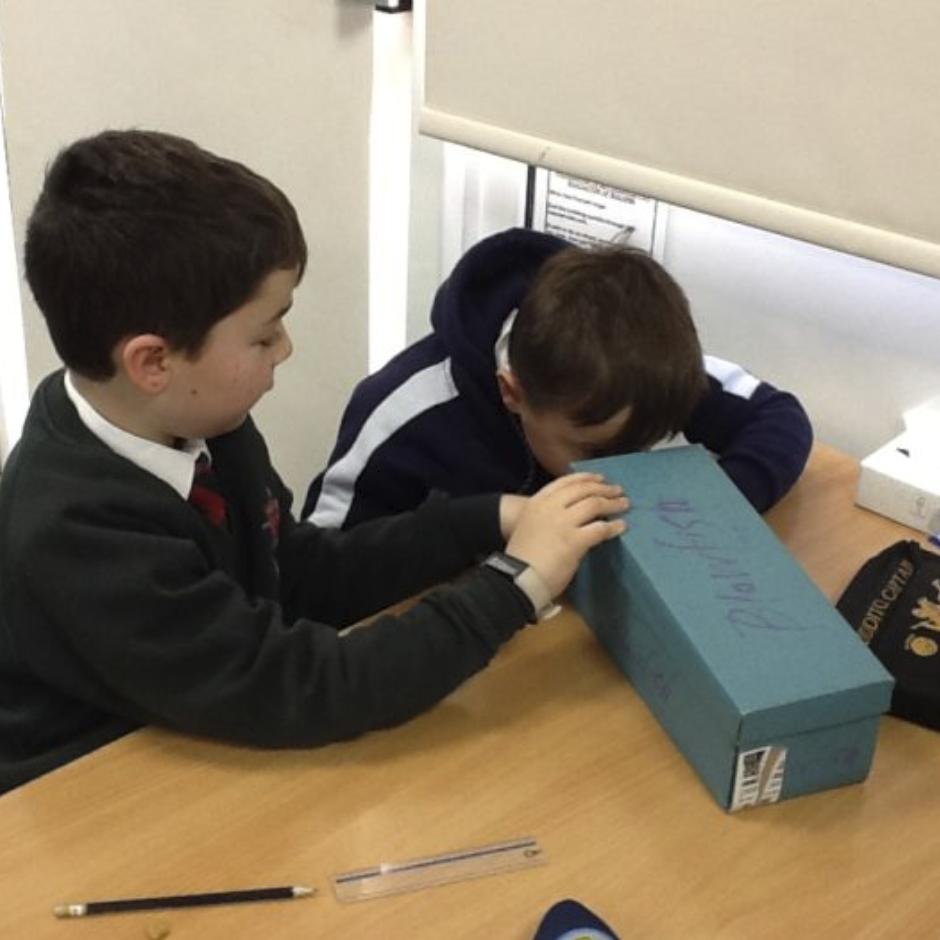Lights on and off
PERCEIVING COLOURS:
Colour is contextual
What happens to colours when we turn the lights off?
Details:
All ages
Time: 10 minutes
Learning Outcomes:
1. Recognize that the amount of light falling on an object impacts its colour appearance.
2. Notice that different colours become visible at different levels of illumination.
Colour Concepts:
1. We see colours in high levels of illumination; colours disappear in low levels of illumination; our cones function in high levels of illumination and our rods function in low levels of illumination.
2. Colours with higher lightness/value reflect more light. The lightness/value of a colour determines when it will be visible as levels of illumination increase. This makes the vivid yellow blocks appear first in this exercise, as light is slowly added to the visual scene.
Materials:
A selection of four coloured objects – a red, green, blue and yellow. You can use coloured foam blocks, or vivid tiles from the sorting set.
Flashlight (white)
White coloured paper
Sturdy surface for carrying objects (e.g. book, heavy cardboard)
A dark space
Instructions:
Figure 1. Images of coloured blocks under varying levels of illumination.
Place the white paper on a book or sturdy cardboard.
Arrange the objects on white paper and notice their colours.
Take the objects into a dark space (e.g. into a closet), or turn off all the lights and close the blinds on the windows.
Describe how going into a dark space affects the colours of your objects.
Slowly add light to your space. You can slowly open the door, or turn on your flashlight and first cover the light beam fully with your hand, and slowly remove your hand and gradually uncover the light beam. Notice and describe how the colours of your objects change.
Try with other colours.
Shoebox Variation:
Make 1/2” square hole at each end of a shoebox.
Place your selection of objects into the box and cover it.
Peer into one end to see you can identify the colours of the objects inside.
Lift the box lid bit by bit in order to allow light in until you clearly see the colour of each object one at a time.
Optional: Work with a partner to measure how much you need to open the box to see each color. Have fun!
Shoebox Variation
Working with a partner to measure the amount the box lid needs to be lifted to clearly see each of the different colours.
Vocabulary:
Questions & observations:
What do you see in your dark space/box when all the lights are completely off? How does the appearance of the blocks change?
As light is added to your space/box:
How do the colours change as you add a source of light? Make sure to describe the colours with their hue family.
Which hue family do you see first?
How do the colours you see change as the light level changes?
Which hues are hardest to see in the dark?
Can you see colours in the dark? Explain why or why not.
What’s going on?
We see in colour when we experience levels of high illumination, like outside on a sunny day, or indoors in a fully lit room. When less and less light illuminates our surroundings, colours begin to disappear. In extremely low levels of illumination, colours can disappear altogether, and we perceive the world in greyscales.
When we experience colour vision, our cones receive light and activate our visual system. In low levels of illumination, our cones do not function as well, and our rods begin to work. This affects how we perceive colours. In extremely low levels of illumination, only our rods function and we perceive the world in greyscales.
Colours with higher lightness/value reflect more light. The lightness/value of a colour determines when it will be visible as levels of illumination increase. This makes the vivid yellow blocks appear first in this exercise, as light is slowly added to the visual scene.
Find out more:
See discussion on So how do we see all the colours in the world?





